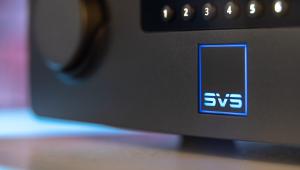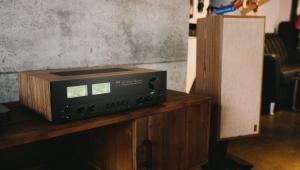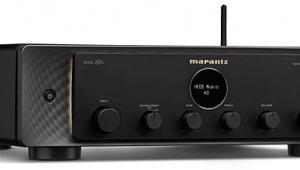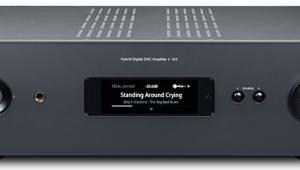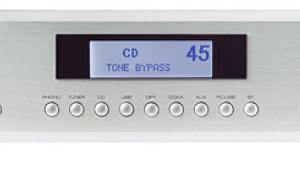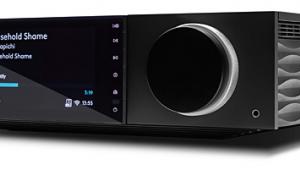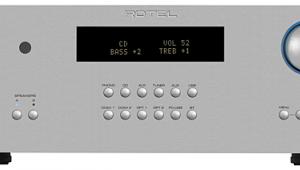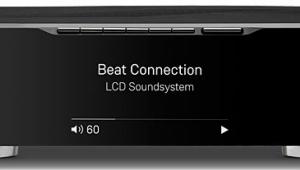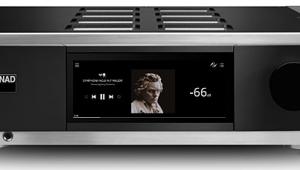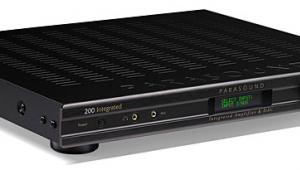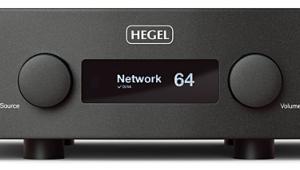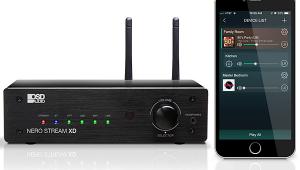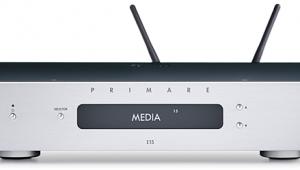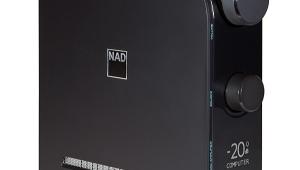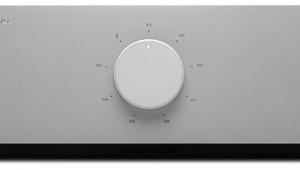TEAC AI-503 Integrated Amplifier/DAC Review Page 2
I placed the AI-503 in my hi-fi rack and connected it to an Elac Discovery music server with built-in DAC (see review in our February/March 2018 issue) running Roon Essentials music library software. The speakers I used for the test were GoldenEar Technology Triton Five towers; to evaluate the headphone amp, I tapped Sennheiser’s HD 598. For computer input, I used a MacBook Pro running JRiver Media Center 21. The AI-503’s manual states that a Windows driver is available on TEAC’s website, but it hadn’t been posted yet for download in the site’s support section during my evaluation, so I wasn’t able to test Windows compatibility.
 Performance
Performance
Comparing the performance of the Elac Discovery’s analog and digital outputs connected to the corresponding inputs on the AI-503, I sensed that the TEAC’s DAC was slightly better at revealing nuances in tracks with vocals. With the AI-503 handling decoding, there was also a clearer presentation of instruments in space. For example, when I played a familiar track, Mazzy Star’s “Flowers in December,” the violin stood distinctly behind the acoustic guitar. Listened to through the Elac, both instruments tended to blend more in the mix.
Another song, “Is This the Life We Really Want?” by Roger Waters, provided an even better demonstration of the TEAC’s ability to render a detailed, expansive soundstage. As I listened, a guitar emerged from an impossibly distant point beyond the speakers. The track’s dry vocals, meanwhile, sounded upfront and present enough that it seemed as if Waters was poking his head into my room. I was also impressed by the orchestral flourishes, which had a dynamic impact I normally wouldn’t expect to get from a modestly powered integrated amp. That said, while the bass guitar sounded taut and detailed, it did lack some of the extension I’m used to hearing with my regular, more powerful amp.
I continued to be impressed by the compact TEAC’s clarity and power when I played an electronic track, “LA Trance” by Four Tet. Synths and samples were meticulously rendered, with fine layering, and bass was potent. However, I again felt that the bass lacked some of the weight in the bottom octaves I get with my regular amp. And though I was able to push the volume to relatively high levels in my largish living room and not hear strain, I didn’t get the sense that there was a tremendous amount of headroom. Still, it was my sense during listening tests that the TEAC is rated conservatively at 2 x 30 watts. I’ll be interested to read the measurements once the AI-503 exits our test bench. [Editor’s Note: In actuality, the unit came up a bit short of its 30-watt specification into an 8-ohm load, even at the more conservative 1 percent distortion figure. See Test Bench.—RS]
My final living-room listening test was to play the jazz supergroup Hudson’s take on Joni Mitchell’s “Woodstock.” Here again, the TEAC presented a finely layered and expansive soundstage. Cymbals were rich and detailed, while both the piano and the guitar came through with a clear, natural tone. The standup bass on this track in particular caught my attention due to the crisp quality of the plucked strings and the powerful resonance of the instrument’s hollow body. There was also a degree of warmth to the overall sound that was a pleasant surprise.
Transferring the AI-503 to the desktop, I plugged in my headphones and leaned back to listen to the same tracks. The Sennheiser’s 50-ohm impedance makes it an easy headphone for many amp designs to drive, and I sensed plenty of power on tap from the Class A/B headphone amp that TEAC specs at 2 x 50 milliwatts (32 ohms, 0.1 percent THD).
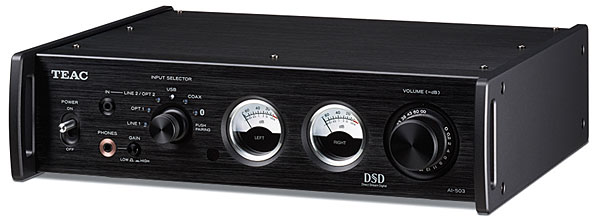
Same as with the speakers, the TEAC delivered impressive clarity and detail, along with an intricate rendering of stereo mixes, as I listened to the tracks through the Sennheiser headphones. I then moved on to a 5.6-MHz DSD download of Beethoven’s so-called “Heiliger Dankgesang,” the third movement from his String Quartet No. 15, in A minor, Op. 132, as played by the chamber orchestra A Far Cry. Here, the massed violas and violins conveyed a sweet tone, and they bristled with detail and ambience. I could clearly hear the scraping of bows across strings, as well as the layering of the instruments in space. The cellos had a similar resonant quality to what I heard from the bass on Hudson’s version of “Woodstock,” a track that also sounded warm and spacious played through the headphone output.
Conclusion
TEAC’s AI-503 is a stunner on several levels. First, it’s got a gorgeous look: The brushed-aluminum case, backlit analog meters, and solid control knobs and switches all exude retro glamour. Equally appealing is the sound, with its clean, refined presentation and its ample power for a compact integrated amp. I did sense headroom limitations when the TEAC was connected to tower speakers in my large-sized listening room, but it would be a perfect fit for smaller spaces where a high decibel level isn’t a requirement, or with more efficient speakers. And in any event, the preamp outputs give you the option of connecting it to a higher-powered amp or self-powered monitors. Whether it’s used in a living room or located on a desktop for computer-based playback, TEAC’s AI-503 is sure to be a conversation piece you’ll be proud to have on display.

